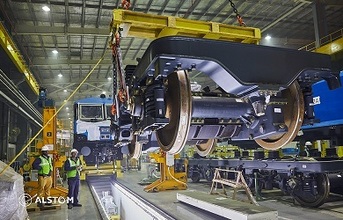
Alstom-built 12000 HP electric locomotives have been officially approved by the Ministry of Railways and RDSO to run freight trains at a maximum speed of 120 kmph. Earlier this year, Indian Railways began inducting the WAG 12B e-locos, which are the most powerful locomotives to run on Indian tracks. Cumulatively, these electric locomotives have already clocked over one million kilometres, thus providing a significant fillip to the country's freight logistics landscape.
These electric locos will allow faster and safer movement of heavier freight trains capable to haul ~6000 tonnes at a top speed of 120 kmph. Planned to be deployed for operations on major freight routes of Indian Railways including the Dedicated Freight Corridors (DFCs), they are expected to increase the average speed of freight trains in India by at least 20-25 kmph.
Commenting on this achievement, Alain Spohr, Managing Director, Alstom India & South Asia said, "The approval from RDSO is indeed a matter of pride for all of us at Alstom and a testimony of our technical expertise in partnership with the Indian Railways. In line with India's push towards self-reliance, we have successfully leveraged our local engineering and manufacturing capabilities. Alstom is also committed to support IR in reducing its carbon footprint and adopt cleaner technologies in its quest to transform into the world's largest Green Railway network. India is a priority for Alstom, and we are committed to work closely with the Indian Railways for all their future modernization endeavours."
"Equipped with Insulated Gate Bipolar Transistors (IGBT) based propulsion technology, it would lead to considerable savings in energy consumption due to use of regenerative braking. The technology is also helpful towards making the acceleration process more efficient by reducing the heat generation and traction noise. Additionally, this move will not only bring down operational costs, but also reduce the congestion faced by Indian Railways", he added.
END



























